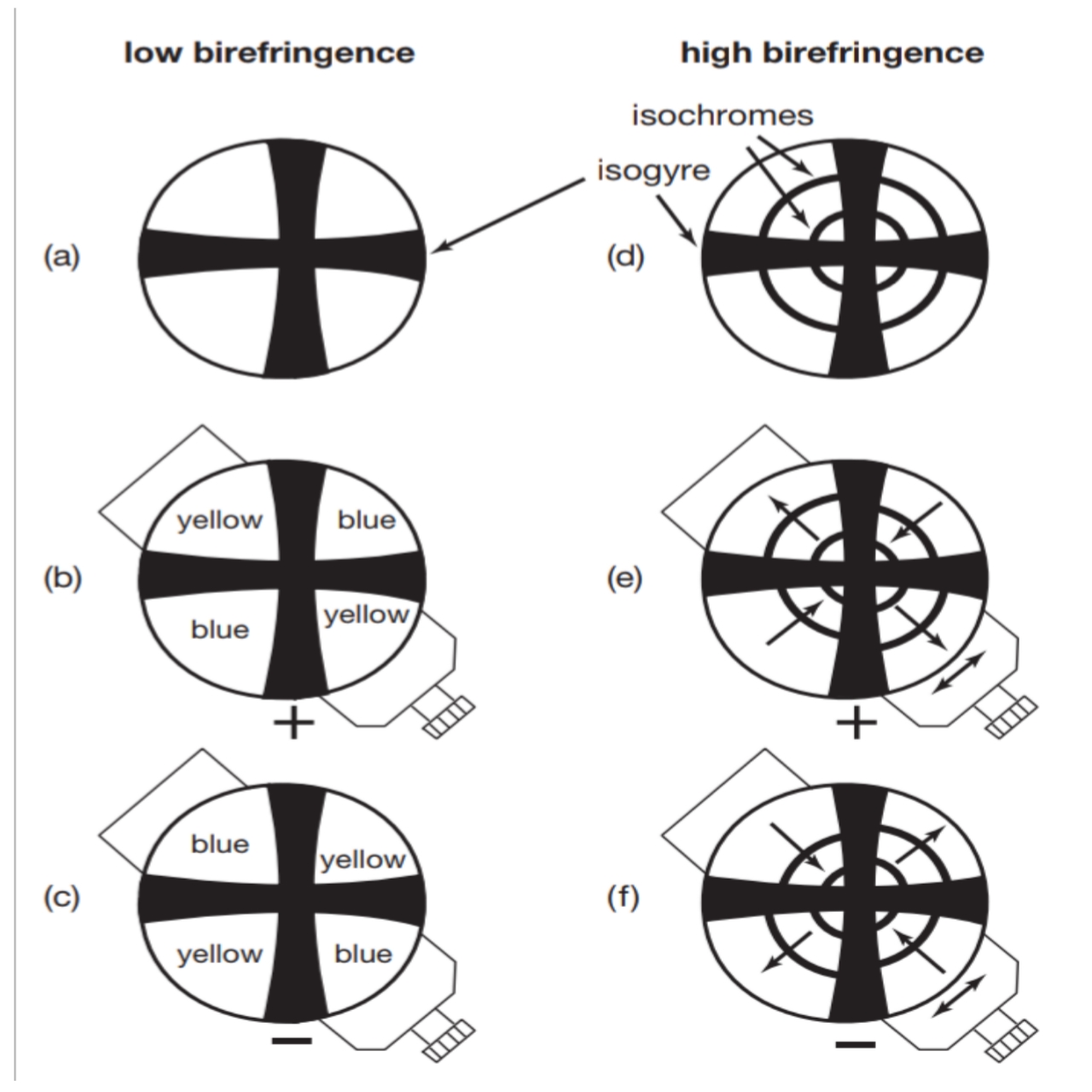To determine the optic sign of a uniaxial mineral, it's a necessity to understand whether or not or not or we tend to tend to try to tod do that by examining associate degree axis figure and exploitation an adjunct plate with illustrious orientation of the short and slow rays. commonplace accent plates have their slow direction homeward southwest-northeast at to every polarizers. The plate is inserted, which we tend to observe interference color changes or isochrome (color ring) movements at intervals the southwest and northeast quadrants of the interference figure (Figure).
Uniaxial axis figures appear as black crosses (Figures ; Plates four.8 and 4.9). altogether parts of a uniaxial axis interference figure vibrates radially (along the radius of the interference figure) and vibrates tangent to isochromes. a way to remember these relationships is with the descriptor WITTI for the e¿ v 45°v seven e e seven v. mnemotechnical “ Is Tangent To Isochrome.” If interference colors at intervals the southwest and northeast quadrants shift to higher orders once the plate (or wedge) is inserted, addition of retardation has occurred. is that the slow ray and so the crystal is uniaxial positive. Subtraction (lower-order interference colors) at intervals the southwest and northeast quadrants indicates that is the fast ray, and so the crystal is optically negative. as a results of vibrates parallel to the prism axis (c-axis) in prismatic uniaxial minerals, the optic sign is that an equivalent as a result of the sign of elongation.
Although we tend to tend to might use a quartz wedge, we tend to tend to unremarkably use a full-wave accent plate once the axis figure shows low-order interference colors. In positive crystals, addition produces blue at intervals the southwest and northeast quadrants of the interference figure, whereas subtraction produces yellow at intervals the northwest and southeast quadrants. In negative crystals, the result's that the alternative. If several fully completely different color rings (isochromes) ar visible, the blue and yellow colors will alone appear on the personal rings getting ready to the melatope (the center of the black cross).
We can usually use a full-wave plate, but unremarkably use a quartz wedge, to figure out associate degree optic sign for minerals that exhibit high-order interference colors. The retardation of the quartz will increase the retardation of the unknown mineral in a pair of quadrants as a result of the wedge is inserted. it will collectively deduct from the retardation at intervals the various a pair of. The result ar color rings (isochromes) moving inward in quadrants where addition happens, and outward in quadrants where subtraction happens (Figure). For positive minerals, this means that colors move inward at intervals the southwest and northeast quadrants and outward at intervals the northwest and southeast quadrants. For negative minerals, the motion is opposite.
Determining the sign of a uniaxial mineral: (a) a rather acentric uniaxial interference figure showing no isochromes (low birefringence); (b) and (c) once we tend to insert the accent plate, yellow and blue colors seen {in fully completely different|in several|in numerous} quadrants alter North yank country to figure out whether or not or not the mineral is positive or negative; (d) a rather acentric uniaxial interference figure with isochromes (due to high birefringence); (e) and (f) once we tend to insert a quartz wedge the isochromes move in and obtain into different quadrants relying on optic sign.


